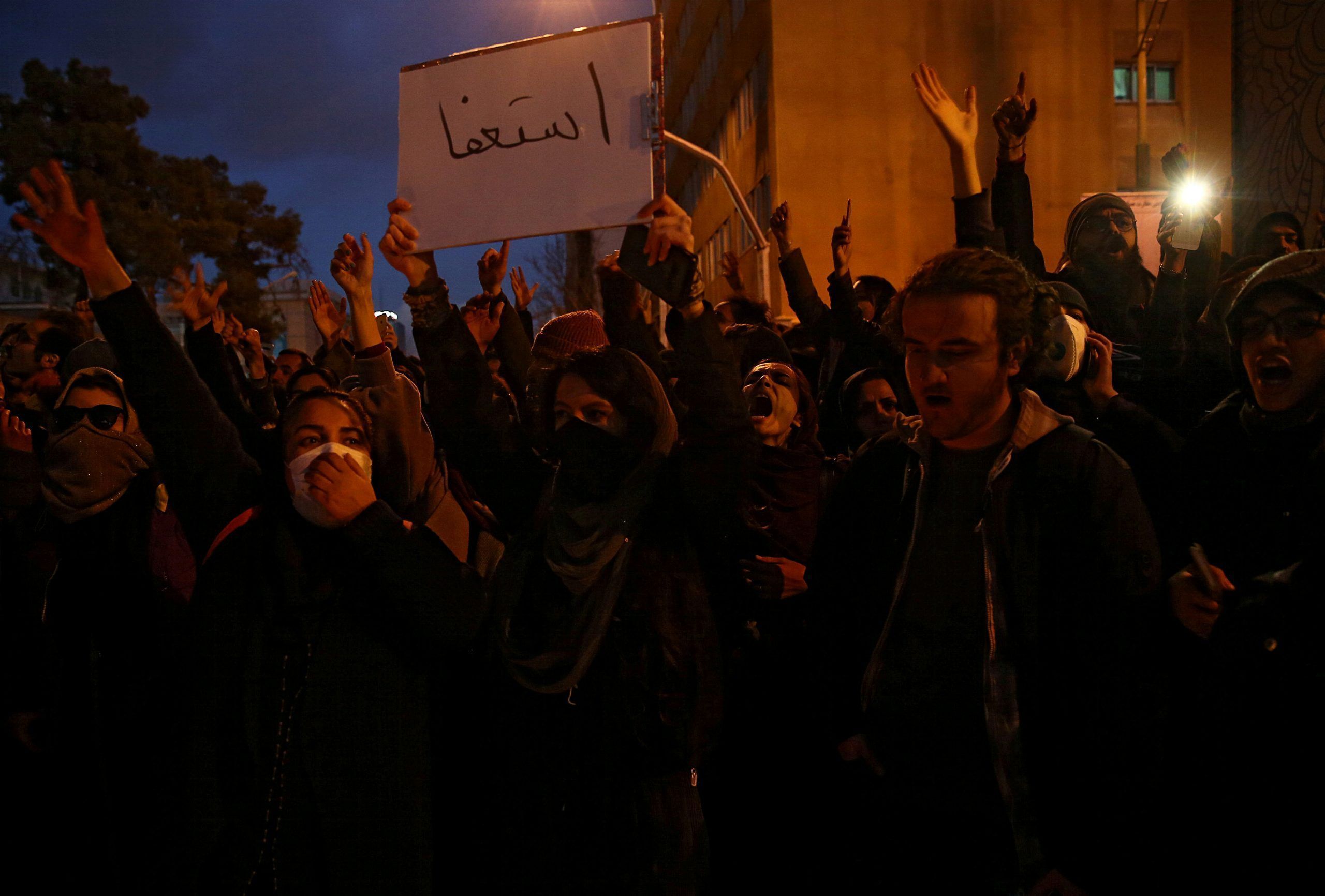By Majid Mohammadi
The Islamic Republic of Iran is facing one of the toughest challenges to its rule in more than a decade. It all started with a violent nationwide riot last November after a fuel price increase by the government that resulted in 304 deaths. It was followed by a protest in January over the Iranian military’s downing of a Ukrainian passenger plane near the capital Tehran, which killed all 176 people on board.
Iranians are sadly getting used to being brutalized and shot at by the regime’s security forces. While most of those who poured into the streets in November were from the working classes, in January, people from all walks of life, including middle-class professionals, university students, and many in the creative community joined the protests. Several filmmakers, theater directors, actors, musicians, and visual artists have boycotted the forthcoming 38th International Fajr Art Festival in a show of support for the families of the victims of the Ukrainian plane crash.
Video clips posted on social media showed clashes between protesters and anti-riot police, Basij (volunteer) units, and security forces in at least 15 major cities in November. Authorities enforced undeclared martial law in many provinces. Among the most notable slogans shouted by the protesters in November was “Reza Shah, Bless Your Soul,” evoking the spirit of the founder of the Pahlavi dynasty, which ruled Iran from 1925 until 1979.
While most reformists did not take part in the November protests, they poured into the streets in January. Responding to Iran’s Supreme Leader Ayatollah Ali Khamenei and the conservative establishment, who question their patriotism, the disillusioned reformists chanted: “Do Not Accuse Us of Treason. You, the Oppressor, Are Guilty of Sedition.” Students at Tehran University chanted: “No Referendum, No Reforms, Boycotting the Revolution.”
Most reformists whose interests are not aligned with the establishment and the Islamic Revolutionary Guards Corps (IRGC) are stuck somewhere between promoting reforms and advocating regime change. They will, however, be more inclined to favor the overthrow of the Islamic Republic as the anti-government protests gain momentum in Iran.
A call for toppling the regime has been at the core of every single protest since teachers, truck drivers, factory workers, and pensioners went on a countrywide strike in December 2017. The downing of the Ukrainian passenger plane has given Iranians another opportunity to question the legitimacy of the Islamic republic rule, but people know that the regime will never admit to its crimes. It will continue to lie, brutalize its citizens and ignore their outcry, as it has done so for the past four decades.
Most slogans in recent protests have directly targeted the regime and Mr. Khamenei. They included “Commander-in-Chief Must Resign, This Is the Final Month, Seyyed Ali It Is Time to Go,” “Tanks, Guns and Bullets, Cleric Must Get Lost,” “Death to Velayat-e Faqih [Guardianship of the Islamic Jurist],” “Death to the Dictator,” “The So-Called Just Person Is the True Murdered,” and “Death to the Oppressor, Be It the Shah or the Leader.”
The Islamic Republic and protesters have been in a war of attrition since December 2017. People have been outraged by rampant corruption and incompetence, which have brought the country to the verge of complete social, political, and economic collapse. Protesters hope that more people will join them in their struggle against the regime.
The state will have a difficult time stopping the protests that have been gaining momentum in recent years. While a small minority holds power in Iran, the majority, meaning the Iranian people, use every opportunity to challenge the establishment’s authority. The staunch supporters of the regime have, however, called for an ideological cleansing of the nation and purging the country of dissidents — sending them all to live in exile.
Other slogans in the November and January protests targeted the regime’s propaganda machine. They included “Our Martyrs Did Not Die so We Worship the Murderous Leader,” “IRGC Dictator, You Are Our DAESH [Arabic acronym for the Islamic State of Iraq and the Levant (ISIS)],” “1,500 People Died In November,” and “The IRIB [Islamic Republic of Iran Broadcasting] is a Disgrace.”
Most of the slogans in the January protests, however, condemned the IRGC, the Law Enforcement Forces, Basij units and plainclothes security agents who brutalized the people. They included “We Are Unarmed, Put Away Your Batons,” “Shame on You,” “Basijis, Have You No Shame? Leave University Students Alone,” “Disgraced Basijis Have Plunged the Nation into Poverty,” “Our Money Is Given to Basijis,” “The Incompetent IRGC Is Killing People,” “We Are the Children of War, We Fight Back,” and “I Kill Those Who Murdered My Brother.”
There were still other slogans that attacked the leader and state institutions. They included “The Leader Feeds on Our Blood,” “Soleimani Is a Murderer, and His Boss Is a Thug,” “The IRGC Commits Crimes with the Leader’s Blessing,” “Get Lost Basijis,” and “We Do Not Want to Be Ruled by the IRGC.”
Some slogans lambasted the regime for its regional ambitions, including “From Here to Baghdad: The Despotic Regime Is Forcing People into Poverty.” Iraqis staged several protests in Baghdad in November against the presence of Iranian forces in their country.
What sets the protests in December 2017, November 2019 and January 2020 apart from all others that had taken place before them is that most people who took part in these more recent marches were ordinary Iranians who shouted slogans such as “Khamenei Should Resign” which would ordinarily land them in prison for many years.
It is abundantly clear that people have shed their fear of being arrested and jailed by the regime. According to most reports, fewer people died in the January protests than they did in the previous one in November, because protesters marched at night to avoid being filmed, identified, arrested, and imprisoned.
[Translated from Persian by Fardine Hamidi]


